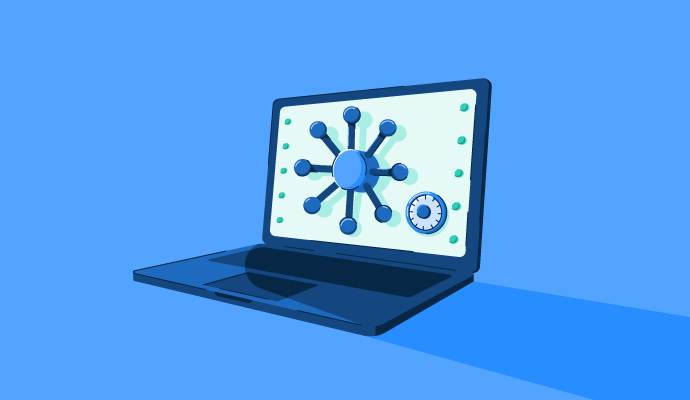What is security posture?
An organization's security posture reflects its capability and preparedness to recognize, address, and respond to cybersecurity risks.
A robust security posture indicates that the organization has implemented multiple layers of protection to safeguard its networks, systems, and data.
It also means that they conduct thorough evaluations to assess the efficiency of their current security measures, identify vulnerabilities, and plan strategies to prevent potential security breaches.
Types of security posture
Below are some common types of security postures and the tools used for their management.
-
Cloud security posture: This deals with security measures and controls in cloud environments and maintains the safety and integrity of cloud-based systems. Cloud security posture management (CSPM) tools facilitate the continuous management of cloud infrastructure risks through prevention, detection, and response.
They monitor cloud systems and identify misconfigurations, compliance breaches, and potential vulnerabilities in cloud services, web applications, and resources. -
Application security posture: This involves securing software applications and their development lifecycle to minimize exposure to cyber threats. Application security posture management (ASPM) tools manage application risks by analyzing security issues throughout the software life cycle.
They ensure compliance, resist cyber threats, and provide a unified view of security vulnerabilities, making issue resolution simpler for security teams. -
Data security posture: This safeguards sensitive data through various measures. Data security posture management (DSPM) tools protect sensitive data across cloud environments, identifying vulnerabilities and automating responses to security and compliance issues.
It adopts a data-centric approach, employing measures such as monitoring, encryption, and access control.
-
Identity security posture: Also known as identity and access management (IAM) posture, it focuses explicitly on securing and managing digital identities within an organization.
Identity security posture management (ISPM) tools strengthen an organization's identity infrastructure, focusing on monitoring and managing user identities, access controls, and authentication mechanisms.
By employing analytics and machine learning, ISPM aims to detect and address potential threats, reducing the risk of data breaches and cybercrime incidents.
Benefits of a security posture
A strong security posture can benefit an organization in multiple ways.
-
Safeguarding data and minimizing cyber risks: A strong security posture identifies and mitigates potential risks, reducing the probability of security incidents like data breaches, unauthorized access, or system compromises.
It ensures the confidentiality, integrity, and availability of sensitive data, securing it from unauthorized access, alterations, or loss. -
Ensuring compliance and building trust: Facilitating regulatory compliance and avoiding legal consequences and damage to the organization’s reputation is an essential feature of a security posture.
It helps build trust among customers and partners, demonstrating a commitment to protecting data and ensuring a secure environment.
- Business continuity: A robust security posture ensures the uninterrupted flow of business operations by mitigating potential threats and preventing disruptions and financial losses.
- Threat adaptability: A dynamic security posture adapts to evolving cybersecurity threats, maintaining organizational resilience and effectively mitigating risks.
- Cost savings: Though initial cybersecurity investments may seem expensive, an extensive security posture can lead to long-term cost savings. This is achieved by preventing costly security incidents and associated recovery expenses.
Basic elements of a security posture
A security posture includes the following key elements:
-
IT resource inventory: A security team ensures the protection of IT assets by keeping track of their availability. Maintaining a comprehensive asset inventory aids in effective asset management.
It helps identify existing assets and builds the organization's resilience against potential security threats. -
Security measures: Adequate security measures are integral to the company’s security posture.
Robust access controls aid in preventing security breaches, encompass user permissions and authentication and provide physical security measures such as entry cards. -
Attack surface mapping: This involves identifying potential vulnerabilities in a system or network to understand possible entry points for cyber attackers.
It allows IT teams to take proactive measures to mitigate these weaknesses, enhancing overall cybersecurity defenses. This approach helps organizations to stay ahead of evolving threats.
- Workforce training and awareness: Employees are the frontline defense against cyber threats. Training them in cybersecurity best practices reduces risk exposure, ensuring they stay informed and vigilant against phishing and other cyber threats.
-
Security policies and compliance: The organization must put security policies in place to ensure adherence to internal policies and compliance with external regulations.
Security policies lay the framework for cybersecurity strategy and defend against potential threats and vulnerabilities in the ever-evolving landscape of cybersecurity.
Security posture best practices
To build a strong security posture, organizations should follow these best practices:
- Security posture assessment: Regular security assessments of dynamic security postures help identify specific cybersecurity risks and save resources. Understanding the company's security stance is crucial for effective attack surface management and maintaining a secure environment.
-
Establishing metrics: The company must define specific, measurable metrics that align with overall security objectives to assess the effectiveness and maturity of its cybersecurity strategy.
A company must also periodically revisit and update these metrics to adapt to evolving threats and organizational changes. - Cybersecurity awareness training for employees: Employees should be well-informed and trained on the latest cybersecurity threats to reduce susceptibility to phishing and other social engineering attacks.
- Implementing incident response and management plan: The organization should have an incident response and management plan in place to proactively manage any incidents of attack or data breach. Quick response to a cyber attack significantly reduces downtime and financial losses.
-
Automation: Companies should leverage AI-powered tools to automate threat detection, remediation, and mitigation to ensure a resilient cybersecurity posture.
Ready to enhance your security posture further? Learn more about the Zero Trust model.

Anindita Sengupta
Anindita is a Senior Research Analyst at G2 specializing in cloud technologies, CAD & PLM software, and web hosting services. With over five years of experience in market research, Anindita has a proven track record of tracking, analyzing, sizing, and forecasting the industrial printer and B2B software markets. Her passion for technology and staying up-to-date with the latest software trends makes her an invaluable asset to B2B buyers and sellers of software. When she's not immersed in market research, Anindita loves to read and explore new destinations, constantly fueling her curiosity and creativity.

